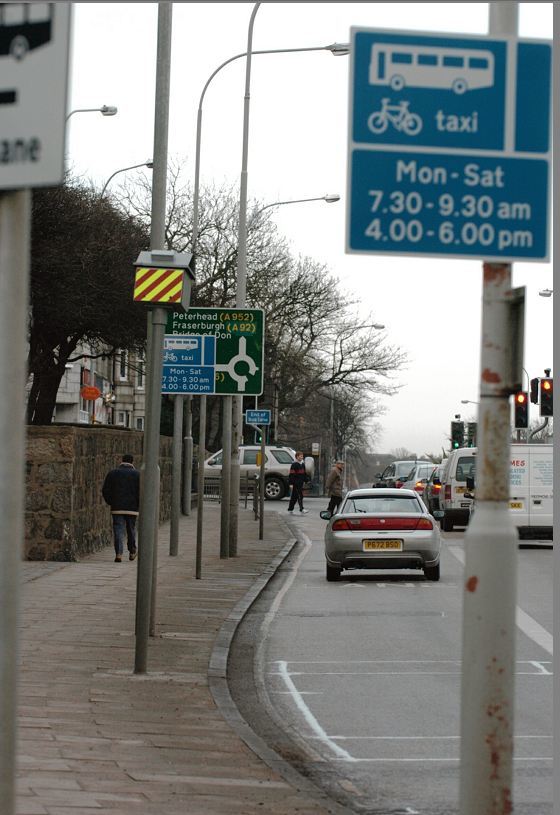More than 2,000 motorists a month are being caught out by Aberdeen’s controversial bus lane cameras.
New figures show the council-run devices snapped 12,208 drivers in the first six months of the year – potentially netting more than £700,000 in fines.
Critics labelled the system in the north-east “Draconian” after it emerged that almost 1,000 more motorists were charged for using bus lanes in Aberdeen than in Edinburgh – a city with twice the population.
The data, obtained through Freedom of Information legislation, shows just 11,280 fines were issued in the capital in the same period.
Drivers caught by the cameras face a £60 penalty – reduced to £30 if paid within 14 days.
If all the motorists snapped in Aberdeen paid the full fee it would be worth £732,480 to council coffers. Even at the lower level, the sum comes to £366,240.
Last night drivers’ bodies said the figures came as a “shock” – and called for action to reduce the number of fines in the granite city.
Paul Watters, head of roads policy at the Automobile Association (AA), said: “It’s a continuing worry that Scotland seems to be the UK’s capital for heavy-handed bus lane enforcement.
“We’ve had reports before that people are too afraid to pull over into a bus lane to let emergency vehicles pass because they might get a fine.
“In Aberdeen and Glasgow particularly there are a lot of people getting caught out.
“Part of the problem is that the cameras are absolute and nobody watches the footage to see if there are any extenuating circumstances of why they needed to go into the lane.
“Perhaps the authorities are being a bit Draconian.”
Neil Grieg of the Institute of Advanced Motorists (IAM) said: “The ideal bus lane camera doesn’t catch anyone as everyone is aware of the rules.
“The council needs to constantly review their signage and keep up the PR campaign to let people know about the fines.”
Councillor Neil Cooney, convener of the city council’s communities, housing and infrastructure committees, defended the charges and insisted the revenue would be re-invested into improving roads services in the city.
He said: “Money collected from the fines covers the upkeep of the system and is reinvested into transport projects generally.
“I don’t know why Aberdeen is particularly high – maybe that there are more people taking the risk. We also police bus lanes very well.
“We only go after people who break the law.”
Opposition councillor Bill Cormie, who also sits on the committee, said that the reduced options for public transport in Aberdeen could be another reason for the higher figures.
He said: “In Edinburgh they have several bus operators and far cheaper fares.
“In Aberdeen there isn’t any choice in bus operators so more people stay in their cars.”
In 2014, 35,680 fines were issued in Aberdeen – worth £1,040,445 to the city.
A total of 56,844 tickets worth £3.4million were handed out in Glasgow in the first six months of this year – with a total of more than 80,000 through the country.
Aberdeen City Council insisted it was only targeting people who “break the rules”.
A council spokeswoman added: “Bus lane enforcement improves the free flow of permitted traffic in bus lanes, which have become increasingly congested as a result of motorists using them.
“Bus lane enforcement increases the reliability of bus services and improves journey times, makes buses a more attractive option for travel and improves road safety – inappropriate bus lane use can present a safety risk to cyclists and other authorised bus lane users.
“The money from bus lane fines is used to pay for the installation, upkeep and running of the system. Any surplus income from fines (penalty charges) is reinvested in local transport schemes to improve Aberdeen’s transport network.
“A driver who receives a Charge Notice can appeal and there are 12 grounds on which representations can be made – these are listed on the Charge Notice.”
